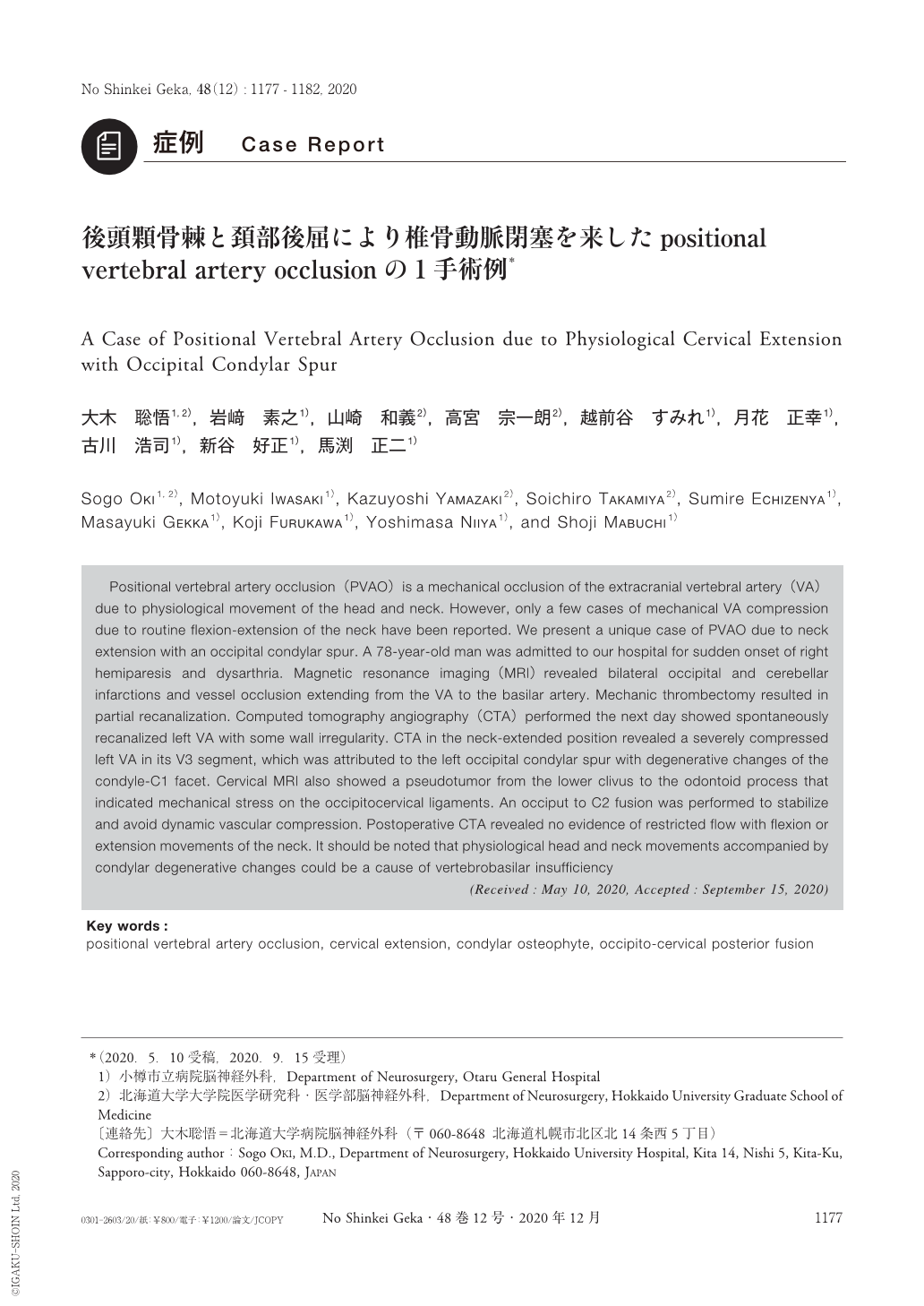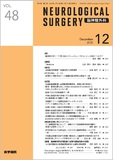Japanese
English
- 有料閲覧
- Abstract 文献概要
- 1ページ目 Look Inside
- 参考文献 Reference
Ⅰ.はじめに
Positional vertebral artery occlusion(PVAO)とは,頭位変換に伴う椎骨動脈の閉塞であり,稀な疾患群である.代表的なものでは,Bow Hunter症候群(BWSy)が知られており,頚椎の回旋運動に伴う椎骨動脈の狭窄または閉塞により,後方循環不全を呈する19).頚部の回旋運動に伴う椎骨動脈の機械的閉塞を来す症例の報告は多々見受けられるが3,5,10,11),頚部の屈曲や伸展に伴う椎骨動脈閉塞を来す症例はほとんどない16).
今回われわれは,頚部後屈で後頭顆骨棘による椎骨動脈水平部(V3)での閉塞に伴い,後方循環系の多発脳梗塞を来した症例を経験したので報告する.
Positional vertebral artery occlusion(PVAO)is a mechanical occlusion of the extracranial vertebral artery(VA)due to physiological movement of the head and neck. However, only a few cases of mechanical VA compression due to routine flexion-extension of the neck have been reported. We present a unique case of PVAO due to neck extension with an occipital condylar spur. A 78-year-old man was admitted to our hospital for sudden onset of right hemiparesis and dysarthria. Magnetic resonance imaging(MRI)revealed bilateral occipital and cerebellar infarctions and vessel occlusion extending from the VA to the basilar artery. Mechanic thrombectomy resulted in partial recanalization. Computed tomography angiography(CTA)performed the next day showed spontaneously recanalized left VA with some wall irregularity. CTA in the neck-extended position revealed a severely compressed left VA in its V3 segment, which was attributed to the left occipital condylar spur with degenerative changes of the condyle-C1 facet. Cervical MRI also showed a pseudotumor from the lower clivus to the odontoid process that indicated mechanical stress on the occipitocervical ligaments. An occiput to C2 fusion was performed to stabilize and avoid dynamic vascular compression. Postoperative CTA revealed no evidence of restricted flow with flexion or extension movements of the neck. It should be noted that physiological head and neck movements accompanied by condylar degenerative changes could be a cause of vertebrobasilar insufficiency

Copyright © 2020, Igaku-Shoin Ltd. All rights reserved.


